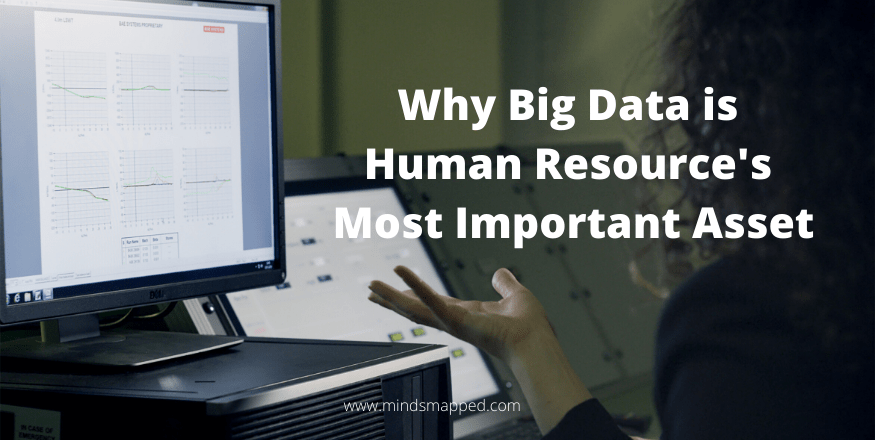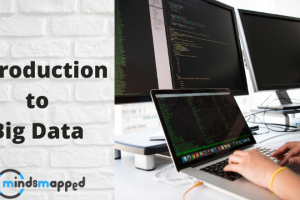
Why Big Data is Human Resources Most Important Assets
00100111 01001000 01100101 01101100 01101100 01101111 00100000 01010111 01101111 01110010 01101100 01100100 00100111
In today’s world, we are surrounded by a vast amount of zeros and ones. Those numbers, called binaries and based on the Boolean logic, are the common way for computers to communicate with each other. Any digital information can be depicted in binary code. Machines and humans communicate in entirely different fashions since machines’ communication is rooted within a computational logic much like different languages, the communication between humans and machines requires translation. The lines of numbers opening this article, for example, translated into writing, is the famous ‘Hello World’, a familiar expression to anyone studying a programming language. Both worlds (human world and machine world) seem to be separated by only a few interconnections, but in recent years, the phenomenon of ‘big data’ has led to an ongoing fusion of the two. Big data are here and they are not going away.
In the interplay between human and machine, both are constantly generating new zeros and new ones. Be it as I type these words, a person talking on his or her phone, someone just walking the streets, be it a traffic light communicating with the control center, a smartphone logging into a Wi-Fi network, or a robot-arm in a factory. Every inhabitant of the modern world now inevitably leaves a digital trail, in addition, to his or her normal trail. The amount of data we generate on a daily basis is staggering, and increasing at an exponential rate. Everybody is playing an active role in this digital phenomenon, contributing ever greater amounts of data. Most interestingly, nobody can hide from this digital way of life. It is our habitual practice to spread the records of our achievements, interests, and activities on sites such as Twitter, Linkedin, and Facebook. Recruiters are now theoretically able to tap into these data streams and exploit the data to meet specific needs. In the future, the digital trail will become more precise, singular, and granular as there is an increase in the number of digital devices in the world as well as the frequency of usage of digital devices.
Big data will have an extensive impact on individual and communal levels. Within an economic organization, the effect of big data will transform the way people are working. Big data will enable the HR department to have access to all the relevant information as well as communicate with every employee everywhere. Besides, big data will transform HR as HR exploits the technological potential of big data in order to do its work in a more flexible, more dynamic, and more responsive way. Big data will enable HR to strategically realign itself, in order to transform the working environment for its employees. As focus shifts from operational tasks towards more strategic management of the organization, and the relationship between people and big data; technology is seen as a catalyst for the change in the HR function, therefore, big data will enable HR to focus on the tactical perspective and to create an environment for employees that will lead to a competitive advantage.
Applications of Big Data in Human Resources
With the growing amounts of employees, customers, and transactions, Human Resources are compelled to divert themselves towards newer technologies to aid faster decision-making amid a volatile business environment. An enormous quantity of people-related data ranging from performance ratings to tenure, age, safety and accident records, educational background, prior roles, and so on, can assist in knowing the current condition, composition, performance, and risk of the organization. These findings can be utilized to facilitate the growth of employees and the development of products and services. The availability of such data resources makes it possible for HR professionals to evaluate and enhance realistic practices in the areas of recruitment, compensation, performance, training and development, and overall business performance.
Converting data into useful information involves these three steps:
1.Predictive analytics: This step is employed to forecast what could happen in the future based on past data.
2.Monitoring analytics: This involves gathering data that focus on why certain events have taken place and what is currently happening.
3.Reporting: This involves giving detailed coverage of what has happened in a way that it can be used for future reference.
In today’s fast-paced world, analyzing large quantities of different information is a herculean task, but intelligent algorithms have made it easy. The benefits of big data have led to marked improvement and sometimes complete overhauling of the status quo. These are the reasons big data are the greatest assets of HR. Highlighted below are the ways in which big data have improved different division of HR.
The Hiring Process and System of Rewards Have Become Seamless
The application of big data to the domain of HR has created a streamlined workflow where the gathering and examination of data before, during, and after the process of hiring have become relatively easy. As a result, organizations are able to make smarter hiring decisions and develop a more efficient workforce. The talent acquisition software is a perfect fit for tasks like these. It allows teams to collect and store information of the relevant candidates with an attractive benefits package that is tailored perfectly for their needs. In addition to this, one can also monitor and track the efficiency of recruitment efforts. This empowers HR personnel to come up with highly effective recruitment policies that produce top-notch candidates. Therefore, as the process and cost of recruitment are drastically reduced, the results are a more effective and more appealing recruitment process.
Encouraging and Engaging Employees Are no Longer Demanding
By capturing the activities of employees, HR can uncover top performers and reward them. In the case of ineffective behavior and violations of the organization’s policies, and other activities that negatively impact the growth of the organization in some ways, these stats can aid HR in taking prompt and appropriate action. Data analytics can also reveal if any employee is struggling to keep up with the expected pace, so, that the needed assistance can be given to such an employee to boost his or her productivity. After all, every employee requires job satisfaction, and creating a win-win situation can leverage their talent and skills in such a way that benefits them as well as the organization.
The Possibility of Wrong Hire is Low
With the help of HR analytics, you can observe a significant decrease in the cost of wrong hires because big data make it possible to probe the work history of applicants and make an informed decision. A wrongfully chosen employee can cost the company more than just their salary and benefits. It can also mean an increase in recruitment costs, training expenditures, productivity loss, and negative reviews from clients.
Resource and Workforce Management Has Improved
In the present scenario, human capital management is pivotal for organizations that will flourish. Those who make effective use of their resources can attain much more than their competitors. For instance, if someone is sloppy in scheduling, other professionals will perform below optimal capacity because they are not operating within the scheduled framework. Big data analytics enables HR to take advantage of big data for better resource and workforce management. Starting from the tools that enable data-driven scheduling to dispatch to the ones that help balance the tasks as well as generate adequate revenue. The objective is to improve organizational efficiency in the modern enterprise.
Increased Employee Retention
When an applicant is hired, a huge quantity of resources is expended on him or her in the form of training, remunerations, bonuses, and other benefits that enhance job satisfaction. What happens when he or she resigns? You start looking for a replacement, and the entire cycle repeats when employees leave. With the help of big data, algorithms can flag employees at risk of leaving by interpreting their online activity, profile updates, job performance, and payroll data. When the system flags a highly valued employee, there is an opportunity to retain them by offering them a raise, a more challenging role, or more training. Some companies, like Xerox, Wal-Mart, and Credit Suisse, have successfully increased their retention rates by up to 20% using this method.
Enhanced Accurate Performance Predictability
Employers of labor have always been plagued with the dilemma of how applicants will turn out when employed. Are the applicants the right fit for the work culture? Are they going to perform their duties at a satisfactory level? The gut feeling will not solve this kind of problem. Trying to ensure applicants meet all of the requirements for the job or comparing the applicants to your current top performers is a laborious process. Instead, HR analytics algorithms can use the records of successful employees to build out a profile of high performers. This creates a targeted head-hunting tool that can send personalized messages to the right talent. Some freelancing platforms have already started using this approach, and the predictions are significant enough to evaluate future job openings, promotions, and even layoffs in a company. With this process, money and time on the recruitment process are saved.
Benefits Packages Have Been Improved
Identifying the kind of perks employees want as part of their remuneration package is an effective motivating factor. Following the lead taken by insurance companies, employers can obtain health-related data on their staff. This makes it possible to create more attractive and beneficial packages. However, as a cautionary measure, it is important for organizations to be transparent about what they’re doing to avoid legal issues related to privacy and discrimination policies. This can be done by ensuring staff is formally notified of how their data are being collected and used.
Final Thought‘s on Why Big Data is HR’s Most Important Assets
A brilliant case study of HR analytics applications can be seen in football clubs. One example, in particular, that seems strikingly fitting is the Milan Lab of the Italian football club, AC Milan. The club is using modern technology extensively to improve health quality and predict the possibility of injuries. Big data support the work of the coach and staff. There seems to be a focus on body health issues and a focus on data-driven decisions. Although it is difficult to quantify the effect of the Milan Lab, it seems that there is a positive effect. Players are able to compete at an international level at an older age. The team won the Champions League in 2007 with an average team age of 30 years, and Paolo Maldini, the captain of the team, was 38 years old, becoming the oldest player to lift the trophy. This is fascinating in a sport predominated by youth. Big data have changed the role of coaches and staff in sports.
Big data are the major assets through which organizational performance is improved, however, they do not produce the desired results on their own, people are still an integral part of the process. Big data will enable people to become more efficient, but it is the HR department that makes big data and the people more capable of interacting with each other. With big data, the role of the HR department has been will completely remodeled, and it is within the purview of HR responsibility to explore new potentials and new ideas for the usage of big data. This distinctive usage of big data will be a competitive advantage, and such a distinctive usage will come from the people involved.
Please post your comments or questions below.



